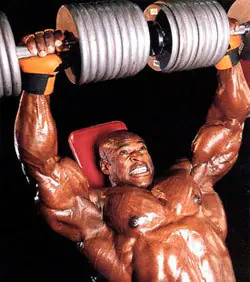I think it’s no secret to anyone how important the technique of performing exercises in the gym is when working on shaping your own body. Bodybuilders, weightlifters, powerlifters and all the other numerous representatives of “iron sports” are people who work with serious, impressive weights, weights and sports equipment.
Compared to representatives of other sports disciplines, their muscles receive much more significant stress, which can be dangerous to health and even deadly. It is for this reason that work on technique should be carried out by every athlete constantly and continuously.
It is important to observe safety rules and follow them impeccably, because sports injuries received due to carelessness, stupidity and in a hurry can unsettle you for a long time, and perhaps even put an end to your further training activities, read more about this here.
The human locomotor system consists of six hundred muscles, two hundred bones, and a couple of hundred tendons. Muscles make up 35-40% of the total body weight. But when drawing up a strength training program, there is no need to set a goal to develop each of them, but it is important to focus only on the main muscle groups that ensure the movement of the limbs, keeping the body in balance and carrying out movements of the spinal column.
The articles in this section analyze the most popular and effective strength exercises with various weights. For convenience, the presented exercises are systematized by muscle groups, for the formation and development of which they are aimed. In the pictures, muscle groups that are actively involved in the work are highlighted with dark shading.
The notes for each exercise contain safety information. It is also necessary to clearly observe the basic safety regulations and injury prevention:
- Strictly observe order and necessary safety measures in the gym. Before starting classes, be sure to check the serviceability and readiness of the equipment and exercise equipment.
- Warm up thoroughly, especially a special one, which should be done before exercises with maximum and near maximum weights.
- Concentrate as much as possible and not be distracted when performing exercises.
- Avoid straining. Exhale during the overcoming phase of the exercise (when the muscles contract) through the mouth, but the lips should be tense and compressed. This tightens the abdominal muscles and stabilizes the torso.
- Constantly monitor the correct position of the back: it should be extremely straight and slightly arched in the lower back when performing the entire range of training movements.
- Be sure to be insured when working with maximum and extremely heavy weights.
- After long breaks, do not force the volume and intensity of the load, increase them gradually.



